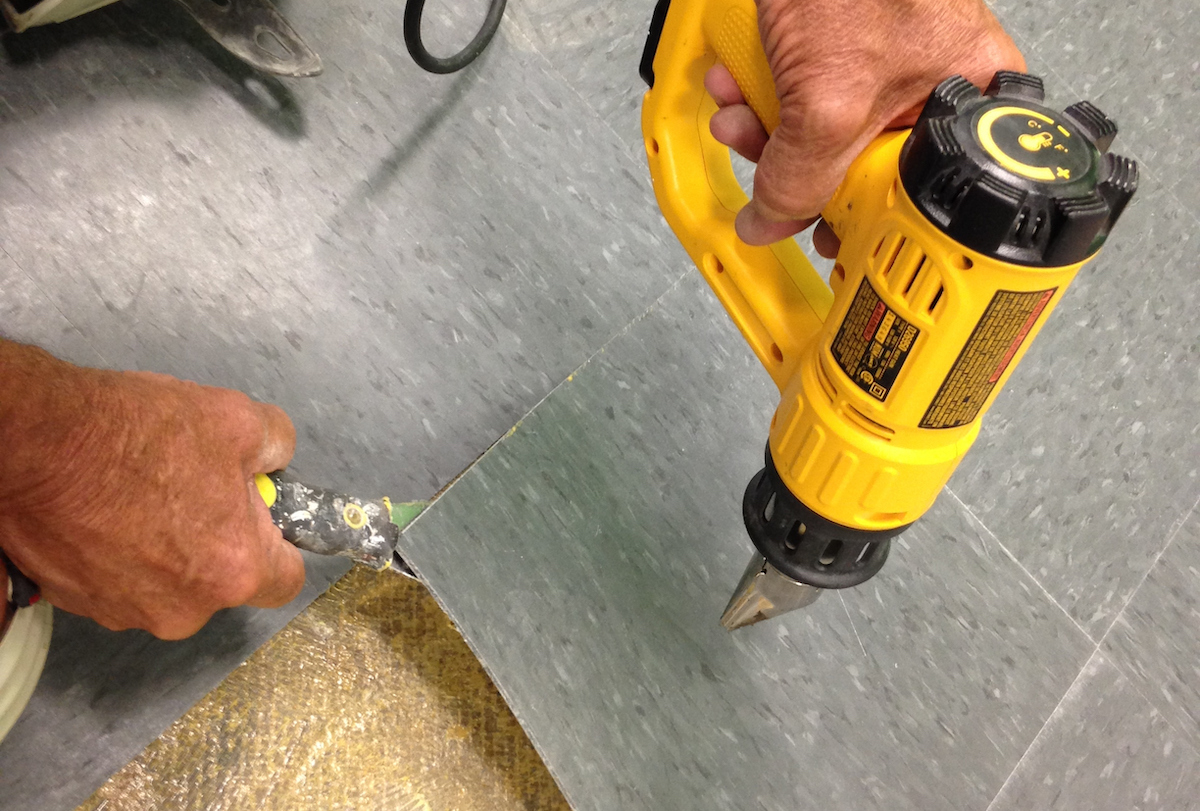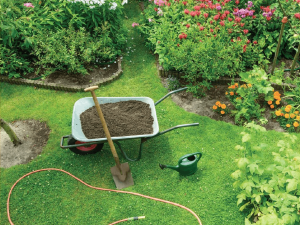We may earn revenue from the products available on this page and participate in affiliate programs. Learn More ›
Peeling up vinyl flooring is no picnic, but the real trial is to get rid of the glue that had been securing the vinyl to the subfloor.
The only silver lining here is that while the work may be tedious and time-consuming, anyone can learn how to remove vinyl flooring. No special tools or advanced skills are required—it’s really only a matter of putting in the work.

Carpet, hardwood, vinyl, and tile flooring.
Bob Vila has partnered with Empire Today to help you easily get beautiful new floors at a great price.
Free In-Home Estimates
Before You Begin
Until the mid-1980s, asbestos often served as an ingredient in vinyl flooring products. If you know that the flooring you’re removing has been around that long, or if you’re not certain how old the vinyl floor is, you’ll want to test for asbestos before you move forward. It’s a good idea to hire a professional to do this.
4 Steps to Removing Vinyl Flooring
Step 1: Remove furniture and baseboards from the room.
To remove vinyl flooring, you must first take all furniture out of the room and give yourself unimpeded access to the work area. You’ll also need to carefully remove all baseboards and any other trim that meets the floor.
Step 2: Cut flooring into 12-inch strips.
Next, locate a section of the floor with no glue underneath. Start removing vinyl flooring right here, using a utility knife to cut the material into 12-inch strips.
Pull up each one gently. Where you encounter resistance from the glue, use a scraper tool (or even a kitchen spatula) to get the strip loose. In places where the glue is especially tenacious, you can use a hammer-and-chisel combination to chip at the hardened adhesive.

Tried-and-True Advice
“I like to remove a small section [of vinyl] before strategizing for the entire floor. Find an edge and peel, cut and scrape as necessary to expose the edge tape. If the vinyl is only taped, the center sections will peel away easily. If glue is present, use a thin-edged flooring scraper while pulling strips of vinyl away. Adding a solvent or soap mixture can help to soften and release the glue. Heat from a hair dryer or heat gun is also useful, but vinyl will melt with too much concentrated heat so be cautious when a heat gun is present.”
—Zach Lazzari, Contributing Writer
Step 3: Get rid of the glue.
One of the downsides of vinyl flooring is that its adhesive makes the flooring tough to remove. If you remove the vinyl flooring but there’s glue remaining on the subfloor, try this: Mix warm water and soap in a bucket, then apply it liberally to the glue, allowing time for the mixture to soak in. When you return, the glue will have softened and become easier to remove.
If that doesn’t work, it’s time to bring some heat into the equation. Buy or rent a heat gun—or in a pinch, use your hair dryer—and hold it directly over the stubborn adhesive long enough to soften the glue (but not long enough to cause any damage to the subfloor). Then go at the glue with your trusty scraper.
Step 4: Clean up.
The last step to removing vinyl flooring is some final cleanup: Use a broom or shop vac to remove all remaining debris.
Another Way to Remove Vinyl Flooring
If this process seems like way too much work, another option is to rent a power scraper from your local home improvement center, which will make quicker work of things. If you opt for the power scraper, be sure to test it first in an inconspicuous area; you will need to adjust its angle so that it removes only the vinyl-and-glue layer, not the underlying subfloor. Score the vinyl into 10-inch sections with the utility knife, then turn on the scraper and get busy.


